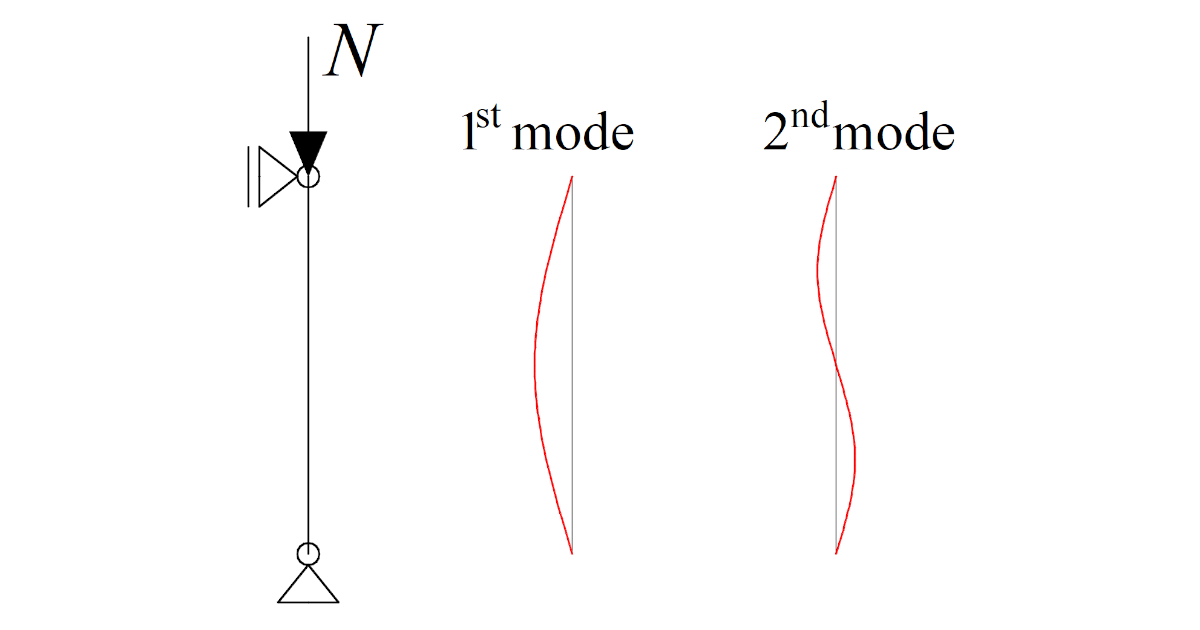Linear Buckling Analysis (LBA)
The buckling modes are an indication of the shape of the structure when it buckles because buckling is a state of collapse, not a deformation.
The buckling mode shape also provides us with information on what type of buckling failure is the member prone to:
- flexural buckling around a weaker or stronger axis,
- torsional buckling (axially loaded columns),
- lateral-torsional buckling (bent beams),
- local buckling (members with thin plates).
In a linear buckling analysis, several buckling mode shapes are found. Failure will occur at the first mode shape and factor. Other modes and factors may help understand the structure further.
In IDEA StatiCa Member, the factor αcr is used to determine whether MNA (Material Non-Linear Analysis) or GMNIA (Geometric and Material Non-Linear Analysis with Imperfections) should be used.
αcr is the minimum load factor for design loads to allow structural members to reach their elastic critical resistance. The actual buckling load of a real, imperfect structure may be much lower, and therefore high safety margin is recommended:
- αcr > 15 – use Materially Nonlinear Analysis (MNA)
- αcr < 15 – use Geometrically and Materially Nonlinear Analysis with Imperfections (GMNIA)



